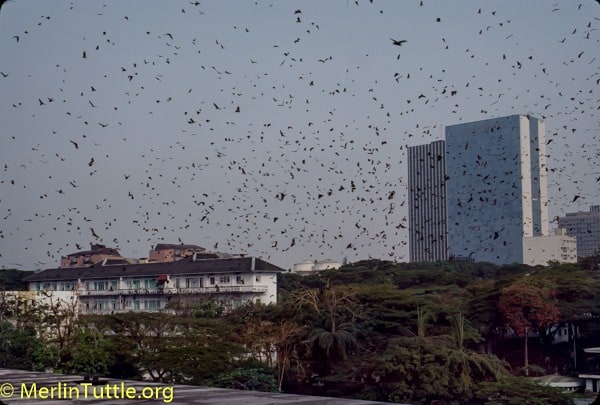Lorraine Boissoneault’s story, Can Saving Animals Prevent the Next Deadly Pandemic?, is clearly well intended. However, when it comes to fruit bats and Ebola it is based on outdated speculation that threatens serious harm to a group of mammals that is already in alarming decline. For a summary of current knowledge of bats versus Ebola and other rare, but so-called emerging diseases, and their speculated association with bats, I refer you to my article in the current edition of Issues in Science and Technology, titled “Give Bats a Break.”
Diseases that are millions of years old, but that are just now being discovered due to their rarity, are being referred to as “emerging” as an apparent public relations ploy to make them sound more dangerous. And speculating associations with bats makes them even more scary, since many people already fear bats. This has proven unprecedentedly effective in gaining hundreds of millions of dollars in grants to support so-called virus hunters, who must continue speculating about potentially dire threats from bat diseases to keep their grants flowing.
Bats historically have one of the world’s finest records of living safely with humans, first in caves and thatched huts, then in log cabins.
Even now, millions of bats safely share cities with us, as here in Austin, Texas. Nor is there any credible evidence of epidemics among the millions of humans who eat bats. Finally, neither I nor hundreds of other bat researchers have contracted an “emerging disease” from a bat, despite our very close association. I for example, have spent more than 55 years studying and handling hundreds of species of bats worldwide, often surrounded by millions at a time in caves, and I remain healthy. Like veterinarians, I am vaccinated against rabies, because I am sometimes bitten in self-defense by animals I handle. Yet I have never been protected against any of the diseases about which we are now being warned.
The current campaign to associate bats with scary diseases often gets large numbers of bats killed no matter what else is said, and large colonies are extremely vulnerable.
To put risk in perspective, in the past 20 years, SARS, Hendra, Nipah, Marburg, Ebola and MERS combined have accounted for fewer than 20,000 human deaths worldwide. Clearly, “emerging diseases” account for no more than a minuscule amount of human mortality, most of which is far easier to prevent. Thus the currently popular focus is a huge misappropriation of limited public health resources that harms both bats and humans.
Merlin’s response has been posted in the comment section of the article as well as emailed via the Smithsonian contact page. You are invited to do the same.


